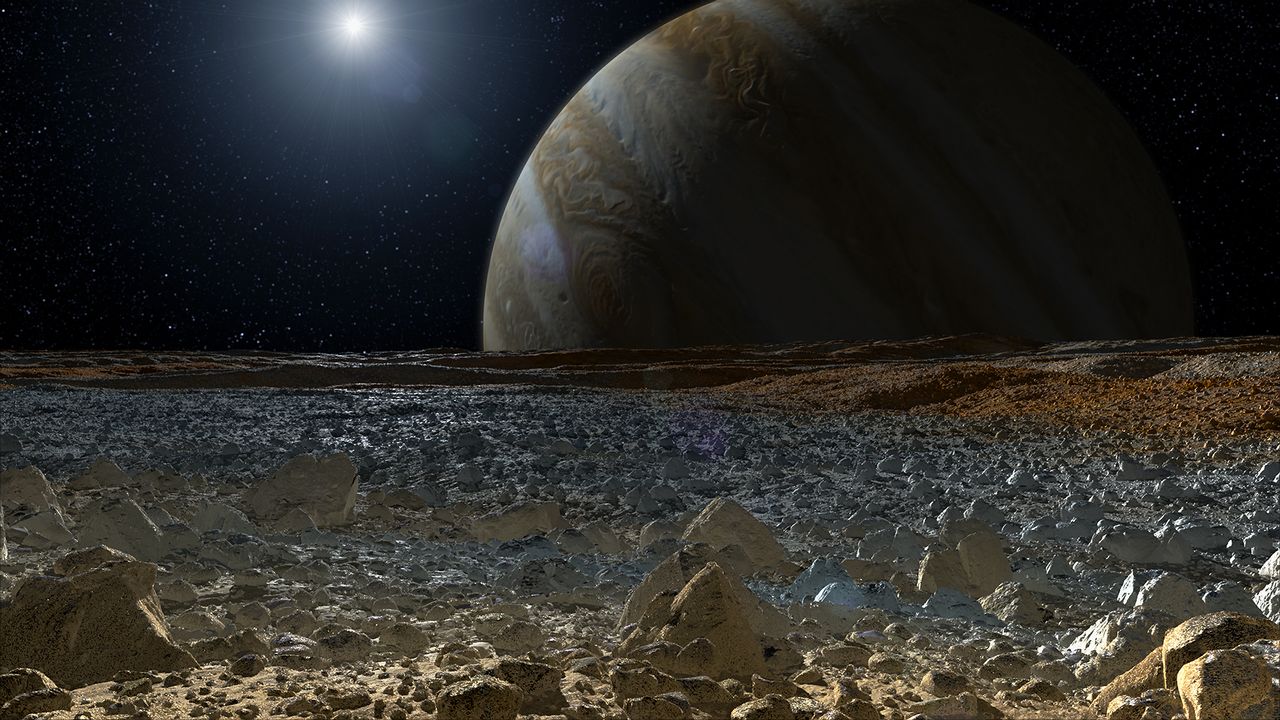Recent observations from the James Webb Space Telescope (JWST) have transformed our understanding of Europa, one of Jupiter’s moons, revealing that beneath its icy surface lies a dynamic and active environment. For years, scientists believed Europa’s exterior to be a stable, frozen shell. However, the latest findings indicate that the moon is not as dormant as previously thought.
Lead researcher Richard Cartwright, a spectroscopist at Johns Hopkins University’s Applied Physics Laboratory, emphasized the significance of these observations. “We think that the surface is fairly porous and warm enough in some areas to allow the ice to recrystallize rapidly,” he explained. This activity suggests that Europa’s subsurface ocean may be more accessible than scientists had imagined.
New Insights into Europa’s Subsurface Activity
One of the most compelling aspects of this study is the identification of “chaos terrains”—regions on Europa’s surface where ice blocks appear to have broken off, drifted, and refrozen. These areas provide valuable insights into the moon’s internal structure and geologic processes. The study focused on two specific regions in Europa’s southern hemisphere: Tara Regio and Powys Regio.
JWST’s advanced capabilities allowed researchers to detect crystalline ice both at the surface and at deeper layers, challenging prior assumptions regarding how ice is distributed on Europa. By analyzing the spectral properties of these chaotic regions, scientists uncovered clues about Europa’s chemistry and its potential for supporting life. The study was published on May 28, 2023, in The Planetary Science Journal.
“Our data showed strong indications that what we are seeing must be sourced from the interior, perhaps from a subsurface ocean nearly 20 miles (30 kilometers) beneath Europa’s thick icy shell,” said Ujjwal Raut, program manager at the Southwest Research Institute and co-author of the study.
Revolutionary Discoveries in Ice Chemistry
The research team conducted laboratory experiments to simulate how water freezes on Europa. Due to the intense radiation from space, the surface ice does not form a typical hexagonal crystal structure as it does on Earth. Instead, it takes on an amorphous form, which is disordered and noncrystalline. These experiments helped clarify how ice changes over time, providing insights into the moon’s surface dynamics.
The findings indicated the presence of sodium chloride, or table salt, alongside carbon dioxide and hydrogen peroxide in the chaotic regions. “In this same region, we see a lot of other unusual things, including the best evidence for sodium chloride, probably originating from its interior ocean,” Cartwright noted. This unique chemistry raises intriguing questions about the potential for habitability in Europa’s subsurface ocean.
The JWST’s NIRSpec instrument plays a crucial role in these discoveries. It is capable of detecting key chemical signatures across a wide range of infrared wavelengths, mapping how these materials are distributed across Europa’s surface. The team found higher concentrations of carbon dioxide in the chaotic regions compared to surrounding areas, indicating that the gas likely originates from the subsurface ocean rather than external sources like meteorites.
Moreover, the instability of carbon dioxide under Europa’s intense radiation suggests that these deposits are relatively recent and linked to ongoing geological processes. Raut summarized the significance of these findings: “The evidence for a liquid ocean underneath Europa’s icy shell is mounting, which makes this so exciting as we continue to learn more.”
As the study progresses, researchers are also intrigued by the presence of carbon-13, an isotope of carbon. Cartwright pointed out, “Where is this 13CO2 coming from? It’s hard to explain, but every road leads back to an internal origin, which aligns with other hypotheses about the origin of 12CO2 detected in Tara Regio.”
This groundbreaking research comes as NASA’s Europa Clipper mission is set to launch, with an expected arrival at Europa in April 2030. The spacecraft will conduct numerous flybys to gather critical data about the hidden ocean beneath the moon’s icy crust, further illuminating the mysteries of this intriguing celestial body.
